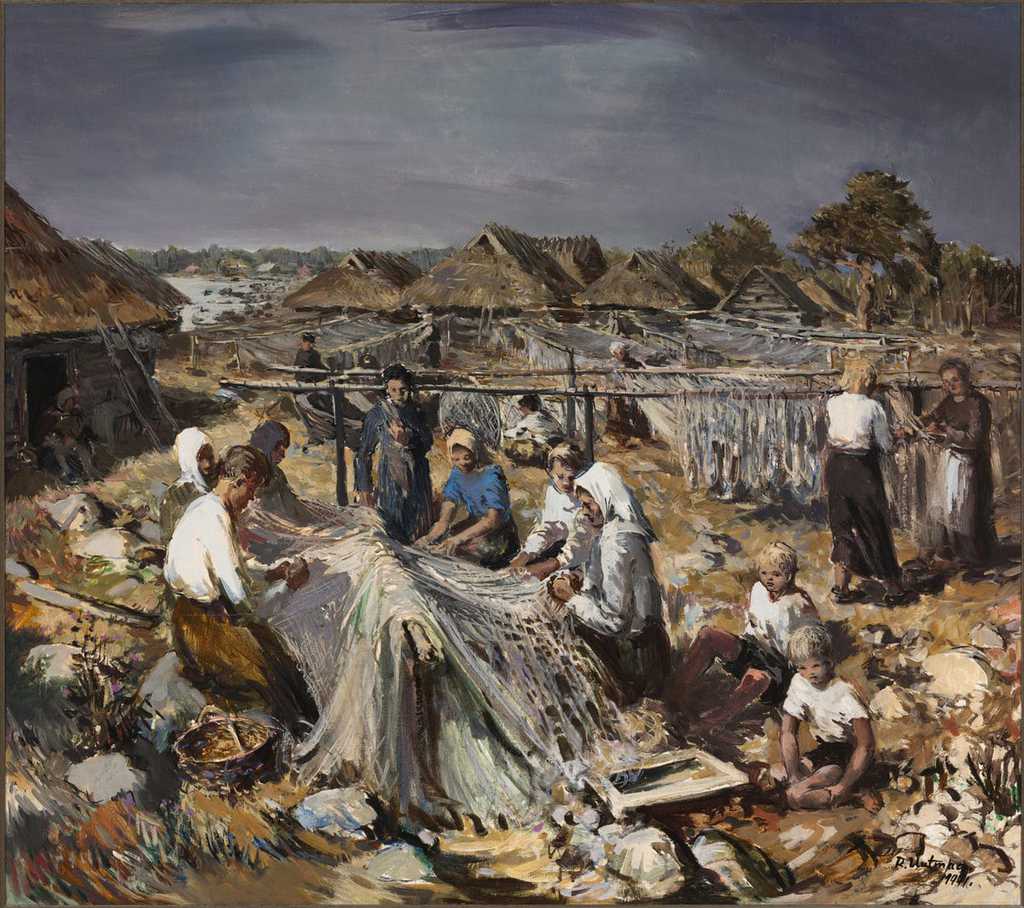
This is a painting that became so dangerous with a few simple brushstrokes that it was hidden for decades. It is 1941. Estonia is already occupied by the Germans when Richard Uutmaa brings three large paintings to an exhibition at the Tallinn Art Hall. One of them (which depicted washers of sheep) is lost to this day, the second is this painting, and the third is Rukkilõikajad [Rye Harvesters], which is part of the Art Museum of Estonia collection. All were evidently in the same format, all depicting traditional chores – mending fishing nets, grain harvesting, and the washing of sheep. These paintings were at the same time the wish to capture on the painting surface the idyllic moment where the mythical ‘former Estonia’ could last forever – unlike in real life. On the other hand, Uutmaa also made a political manifesto because the blue-black-white colour combination is painted in both of the two known paintings. It is right at the heart of the picture in Võrguparandajad [Net Menders], where a woman dressed in a blue blouse and a black skirt cleans white nets. The sky also adds a political dimension. Thunder clouds have appeared there so quickly and unexpectedly that the people have not even realised the presence of danger yet, to say nothing of saving themselves. This is a metaphor, an image of the political situation in Estonia, the horrors of which Uutmaa contrasts with idyll as well as intimacy. We see a carefully composed painting surface with a balanced composition. Here and there, even colourful flower blossoms can be seen regardless of the stony beach. The white fishing nets create rhythms and tones in the heart of the picture, and the roofs of the houses visible behind them do the same thing. The plot of the picture should also gladden us: little children have been brought to the painting’s foreground, all the people are calm and unperturbed, and they work together. Intimacy is also added: Uutmaa has painted the people of his home village, possibly even his relatives, and we also find Uutmaa himself in the painting (the man in the white shirt by the nets). Everything in this painting puts up resistance to what is all around, simultaneously trying to prick the arm of the system and at the same time to build another more ideal and more beautiful world.